When & How to Prune Viburnum: 3 Expert Tips
-
Pete Ortiz
- Last updated:
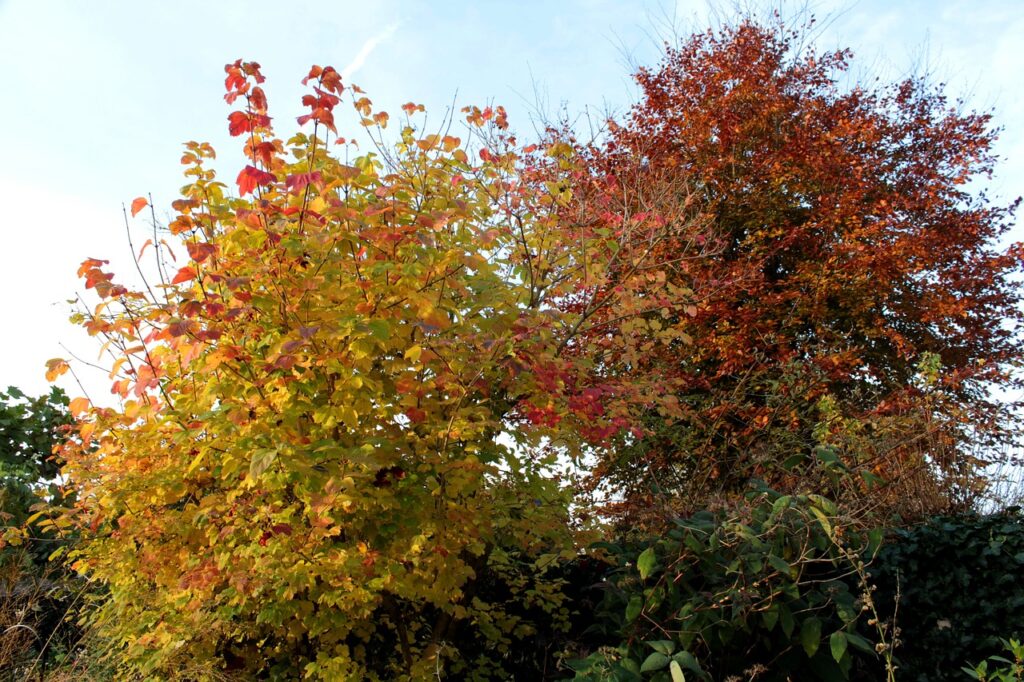
Viburnum plants are versatile and decorative, offering year-round interest. Viburnums are a large genus of mostly hardy, broad-leaved evergreen shrubs with plenty of fragrant flowers in spring and autumn, as well as colorful berries in the fall.
They’re excellent for hedges, borders, or climber vines on arbors or pergolas. These plants make excellent garden plants because they have attractive foliage, produce showy flowers, smell nice, and also provide heavy harvests of fruit. Keep reading to learn more about growing and maintaining viburnum plants in your garden.
The 3 Tips on When & How to Prune Viburnum
1. Always Prune Broken, Diseased, Dead or Dying Branches
Pruning should be done for any branches or stems that have become diseased, damaged, or have died. You can do this at any time throughout the year, but it’s always best to do it sooner than later. To ensure that the plant doesn’t waste energy, you should prune any branches or stems as soon as possible to prevent the spread of disease. It’ll also allow the tree or shrub’s focus to be on new, healthy growth.
2. Remove Branches That Cross, Grow Downward, or in the Wrong Direction
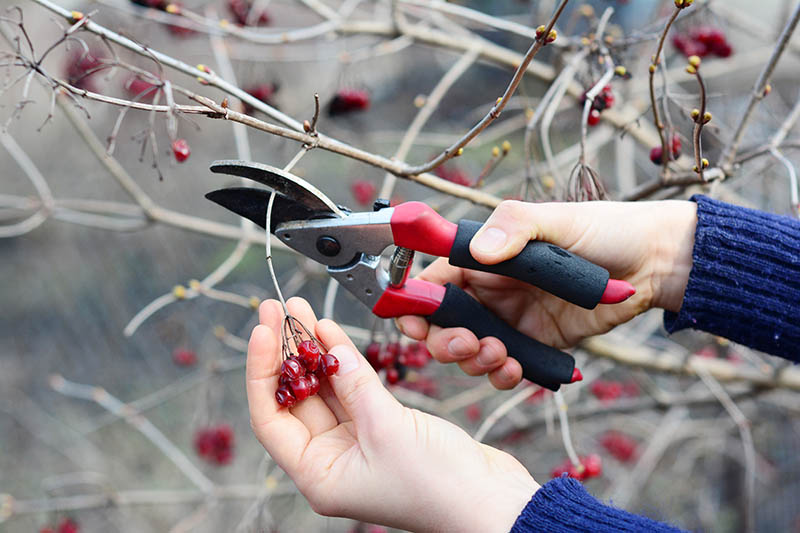
When trimming your viburnum, be sure to take out branches that cross each other or prune the offending limbs. Branches that touch each other can cause chafing and peeling, providing an entry point for disease and insects.
Branches that grow inward towards the center of the plant will likely chafe against other parts. It’s best to trim them when needed throughout the year. Doing so will also allow air to circulate the plant, which helps it to breathe and ward off infections. If your viburnum becomes too dense, it can be susceptible to rot.
If branches grow at an angle that’s downward, they can also cause problems. This could lead to them becoming infected with pests and diseases – especially if they reach the ground. So it’s best to remove them so that the plant grows taller (which makes it easier for the leaves and stems to get sunlight access).
3. Cut Off Water Sprouts and Suckers
Finally, you’ll want to remove any suckers (long shoots that sprout from the roots or base of trees) when you start your pruning session. Similar to any other plants, suckers are a major energy drain for viburnums – which explains their name.
Water sprouts are shoots that grow straight up from the main branches in shrubs or trees. If you see these growing on your viburnum, be sure to also trim them in the next pruning session. Water sprouts should be removed to help guide the growth and shape of a tree or shrub in a way that is advantageous to the shrub, and this way is upward and outward. Cutting them prevents branches from chafing and overlapping.
Why Do You Need to Prune Viburnum?
Viburnum shrubs grow at varying rates and can have different growth habits based on variety. Most viburnums are deciduous, which means they lose their leaves as the weather cools in the fall and don’t regrow leaves until spring. However, some of the viburnum varieties that are commonly found in gardens are evergreen (meaning they retain their leaves throughout the year).
So, to keep your viburnum healthy, you will need to prune the shrub occasionally, removing any dead or diseased branches and shaping the viburnum to keep it healthy and attractive. Pruning can also encourage vigorous new growth on your viburnum shrub.
When to Prune Viburnum?
As a general rule, you should prune viburnum shrubs as early in the year as possible. Ideally, you should prune your viburnum in winter, while the shrub is dormant. This timing will give your viburnum the best chance to heal quickly and get back to growing as soon as spring arrives.
If you prune viburnum plants later in the growing season, you might slow down their growth. You could even stunt new growth if you prune too late in the year, making the viburnum shrub look stunted and slow-growing for months after you prune it. Viburnum shrubs will grow more slowly if you prune them in the summer or early fall, so you might want to avoid pruning during those times.

Techniques to Viburnum Pruning
There are two main ways you can prune viburnums: you can prune them, or you can thin them out. If you need to remove a large amount of growth from your viburnum, you should prune it. Pruning viburnums is a drastic but effective way to control their growth and remove large sections of the plant.
On smaller viburnums, you might prefer to simply thin the shrub instead of pruning it. Thinning involves gently removing small branches from your viburnum rather than cutting them away. Thinning out your viburnum will also help you control its shape, but it also allows you to encourage branching and prevent legginess.
Pruning Tools for Viburnum
There are many tools you can use to prune your trees. And note that there is no single tool that can do everything – each tool works best for the type of branch, limb, or shoot being trimmed on your plant or shrub. Below are some popular pruning tools to use for your viburnums and other plants.
Lopping Shears
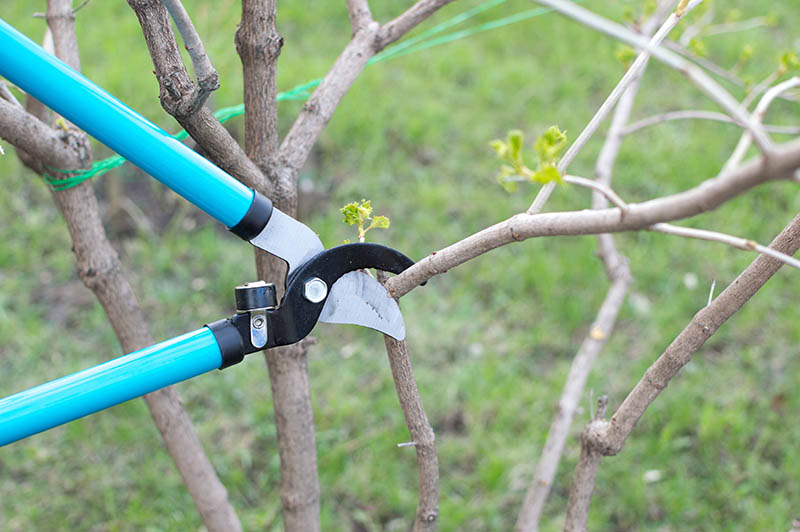
These pruners have a fairly long handle and a large pruning head, in comparison to pruning shears, that is. These pruners are ideal for medium-sized branches up to about 2 inches in diameter. Lopping shears can be used to prune branches from trees less than 10 feet tall. Sometimes the canes of shrubs may be very long and thick.
So even if you don’t have the strongest grip or hand strength, the extra length of the handles makes it easier to trim branches. When you need to do major renovation pruning or hard pruning on large viburnums, the lopping shears are a great tool.
Pole Pruners
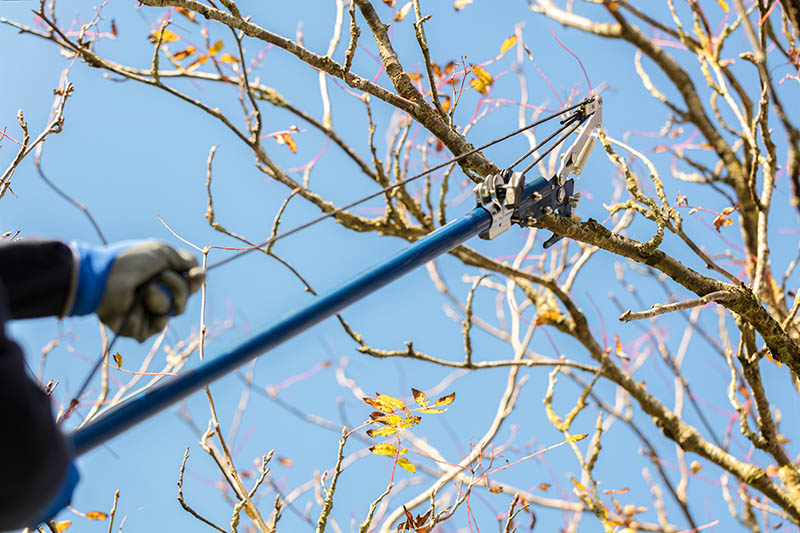
These long-reach pruners combine a saw and a lopper in one. It also comes with a pull rope that helps with branching. A pole cutter has a saw that has a hook blade above and a blade below. The saw is mounted on a pole, and it can be operated by pulling a rope downward. This tool can be hazardous to use so be careful when using it for the first time. This is another tool that’s best for larger shrubs and big branches.
Bypass Pruners
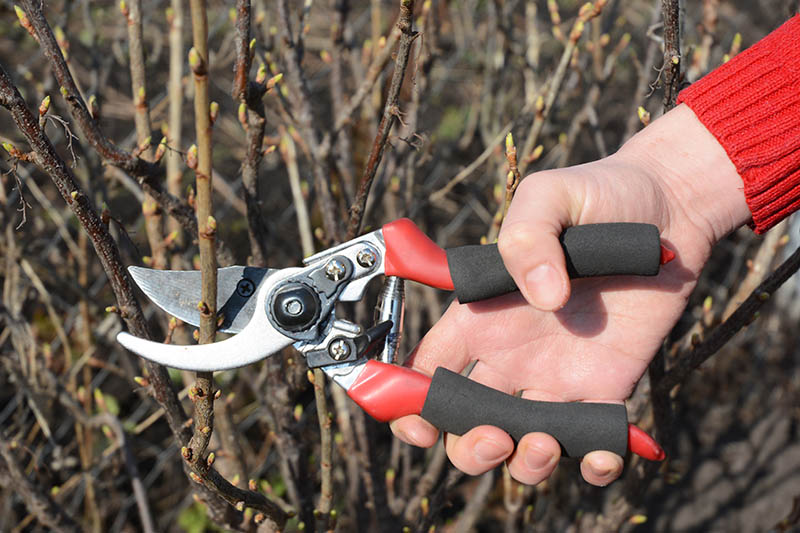
These pruners are best for smaller branches that measure less than 1/2 inch. These tools can be used to prune most small plants, annuals, and perennials. Bypass pruners contain two blades, one of which is sharp, and the other is dull. This allows you to accomplish a few different tasks, especially if you’re cutting young offshoots or need to create angled tight cuts.
Pruning Saws

For larger branches and trees, you’ll likely need to use a folding saw or bow saw. These saws may be better for viburnums that are on the taller side, as they’ll typically have thicker branches. You can buy a pruning saw at your local gardening or home improvement store for about $15-$20.
Hedge Trimmers
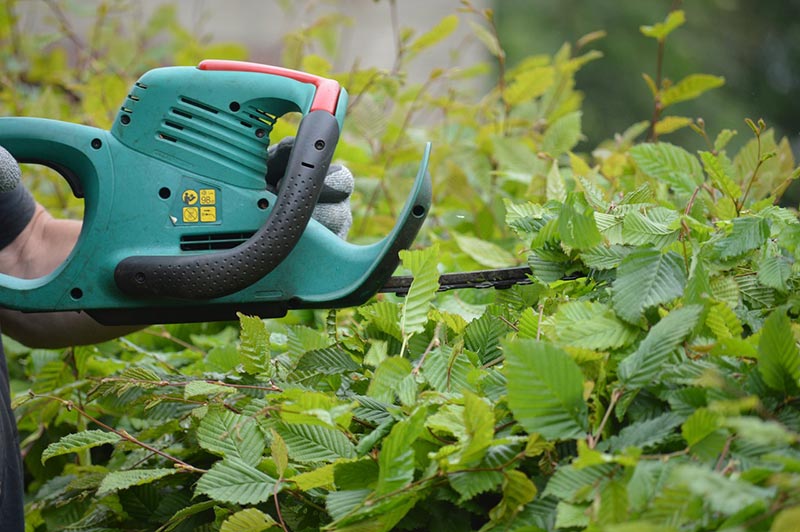
Every homeowner or gardener should have a pair of hedge trimmers on deck, especially if you have hedges in front of your home that need regular trimming in the spring and summer months. These trimmers also have longer handles and longer blades. They are available in electric and manual versions – though the electric versions will save you time and energy. The trimmed hedge has a smooth, flat surface thanks to its long blades.
Chainsaws
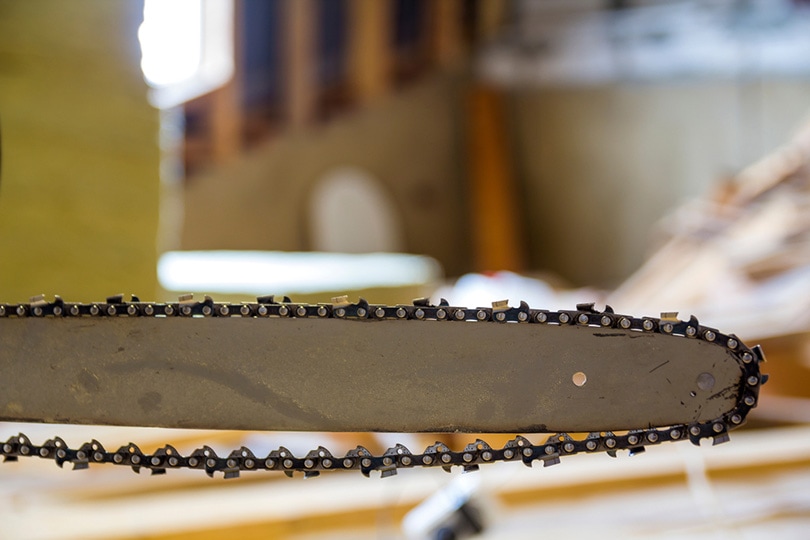
And lastly, we have chainsaws. Viburnums typically don’t have branches that are thick enough to require chainsaw usage, as a pair of trimmers can typically do the trick. But if you have thick branches on other trees in your yard, then having a chainsaw on hand can definitely help when it comes to trimming it down. They’re also ideal for evergreen trees, and complete removal should you need to cut your viburnum down completely for any reason.
Wrapping Things Up
Pruning can be an easy way to control your viburnum’s growth, letting you shape the shrub as you see fit and helping it to flourish in its environment. Viburnums are resilient plants that can thrive despite regular pruning, making them a great choice for gardens of all shapes and sizes.
But to ensure that your viburnum shrub stays healthy, be sure to prune it whenever you see excessive branches growing in different directions or dead leaves accumulating. This way, all of the nutrients will go directly to the healthiest part of a plant, and it will continue to thrive.
Featured Image Credit: Sonja Kalee, Pixabay
Contents




